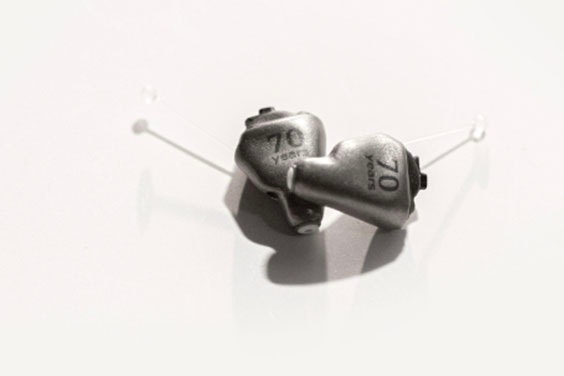CASO DI STUDIO
How Personalization Has Changed the Hearing Aid Industry for the Better

Over the counter usually sets the expectation of one size fits all. However, that is not the case when it comes to hearing aids, which today are 99% personalized to uniquely fit the wearer. This example of mass customization was made through a partnership between Phonak, now part of Sonova, and Materialise. The duo created a solution with a better fit to wearers by digitizing a labor-intensive process by using custom software and 3D printing. At the end, the comfort provided to the wearer and the seamless process has changed the hearing aid industry for the better.
Making the Shift to Digital
Perhaps you don’t need a hearing aid now but, like millions before you, someday you might. When that day comes, you will be happy that Phonak officially started its collaboration with Materialise and its team of software developers in 2000 to create a solution that would forever change how hearing aids are designed and produced.
Prior to the collaboration, producing a hearing aid was a labor-intensive process that could only be performed by a shrinking pool of highly-skilled artisans. The process was not only time-consuming, but it often required quite a lot of manual retouching of the hearing aid before a comfortable fit could be achieved for the end user.
The shift involved going from this labor-intensive, manual process to one that is mostly digitized. The two sides brought their specialties to the table - Phonak with audiology requirements and Materialise with 3D printing and software development — and embarked on a process of co-creation. Through a series of brainstorming sessions, the companies developed an end-to-end solution that ultimately provides a better product to customers.
In the end, the new digitized and automated process was put in place, saving time, and effort, and resulting in a more comfortable, acoustically optimized hearing aid that can now fit so deep in the ear that it is nearly invisible to the outside world.


How the process works:
- An audiologist takes an impression of the patient’s ear canal
- The impression is scanned and the digital file is uploaded to the hearing-aid manufacturer
- A digital model is created in as little as 6 minutes using RSM and then optimized for the patient
- Using Magics technology, the shells are prepared for building, with several shells being printed in a single build (and of course, the orientation of the shells on the platform has also been optimized for a more efficient build)
- The shells are manually finished and the electronics are easily inserted since the shell has been optimized to hold them.
- The patient receives a high-quality hearing aid that fits great and sounds fantastic.
Thanks to this process, hearing aids can be made faster and more accurately than ever before. An added bonus for any patient unfortunate enough to lose, step on, or damage their hearing aid in some way, is that their digital file can be used to create a replacement without having to start the process all over again from the beginning.
It is no wonder that around 99% of the world’s hearing aids are now made using this method.
Over 10 Million Satisfied Customers and Counting
Sonova was one of the earliest companies to show how 3D printing could be used as a means of mass production – and an effective one. It is incredible to realize that since 2000, this partnership has managed to transform an industry, has helped more than 10 million people, and has expanded the possibilities for better acoustics, increased personalization, and higher quality of life for individuals suffering from hearing loss. Furthermore, through this long-term partnership, Materialise has lived up to its mission of innovative product development resulting in a better and healthier world.
Condividi su:
Il caso di studio in breve
Wearables
Selective Laser Sintering
Custom-developed software, including Magics technology
Mass customization
